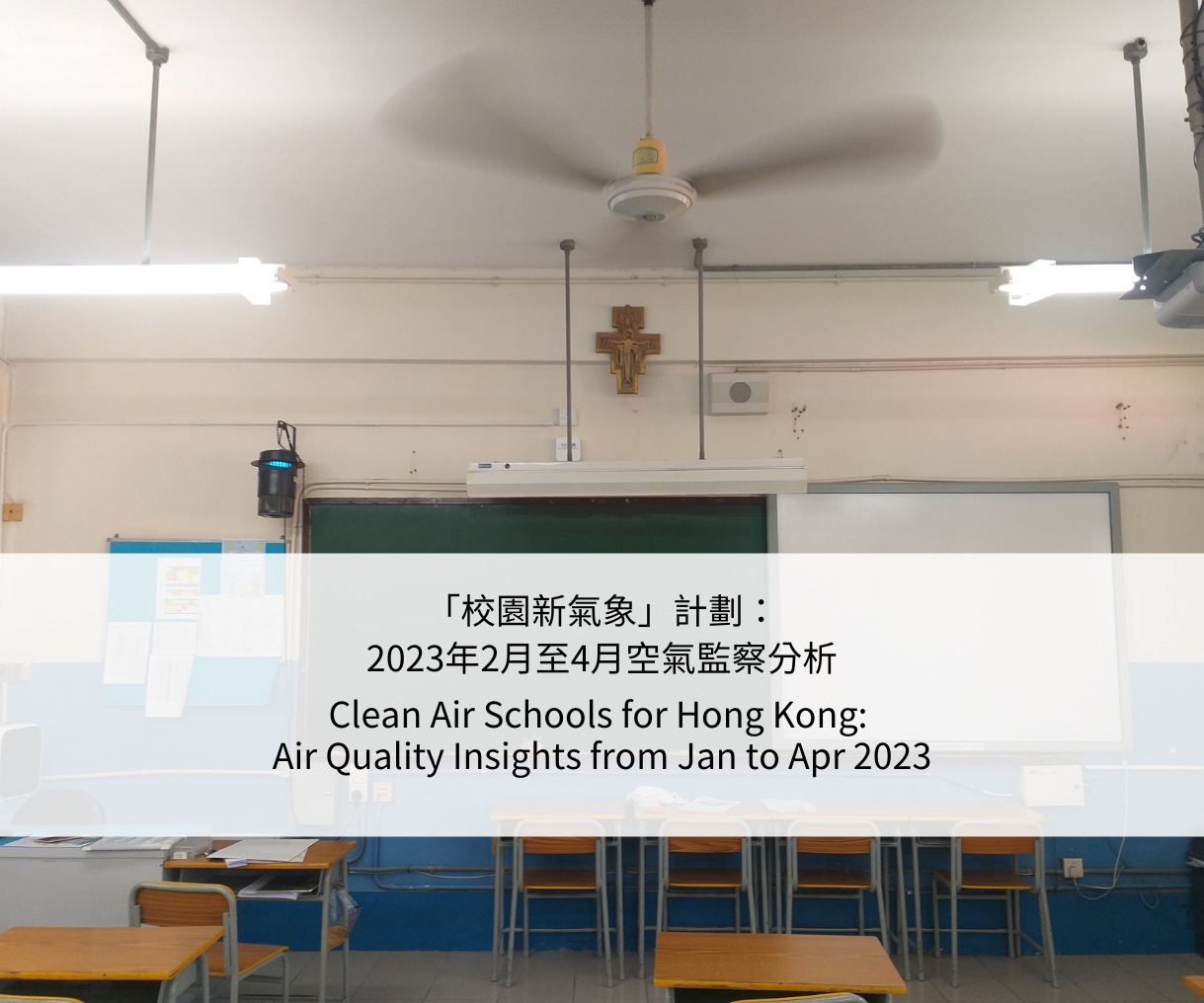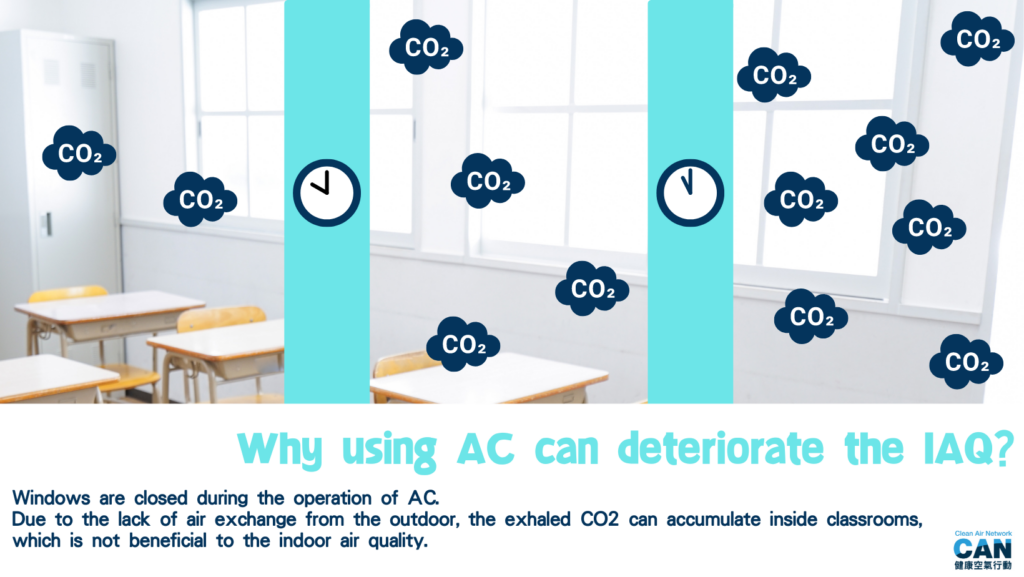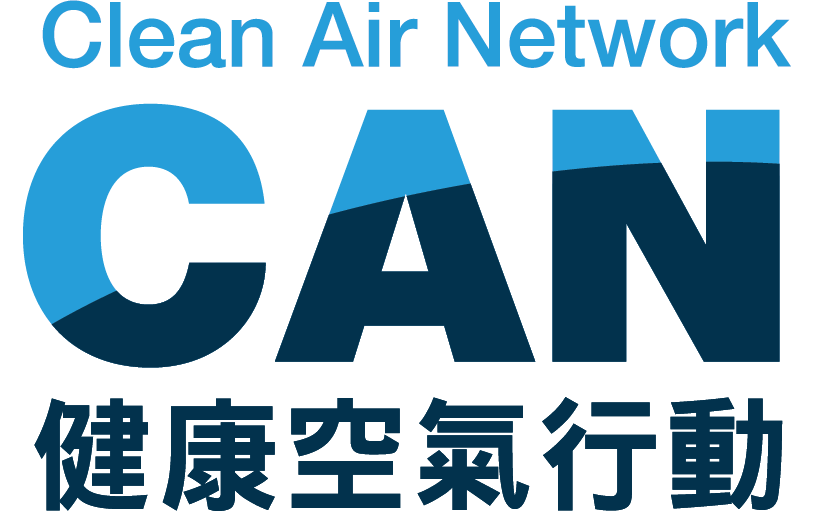
Clean Air Schools for Hong Kong: Air Quality Insights from Feb to Apr 2023
Clean Air Schools for Hong Kong, organized by Clean Air Network (CAN) and the Institute for the Environment of the Hong Kong University of Science and Technology (IENV HKUST), is monitoring both outdoor and indoor air quality in primary schools across Sham Shui Po and Tuen Mun which are located in densely populated areas next to heavily trafficked roads. The monitoring data and insights in the third quarter (February to April 2023) have been released, and below are the key extracted insights.
Worse outdoor air quality in spring
An increasing trend was demonstrated this quarter. As mentioned in the previous quarterly report, solar intensity and duration can affect the concentration of air pollutant ozone. Therefore, in the third quarter, measured across springtime, as the air temperature and solar time increased, the ozone concentration increased accordingly.
The decline in outdoor air quality was also observed in the worsened Air Quality Health Index (AQHI). The health risk categories of “high”, “very high”, and “serious” reappeared in the AQHI recorded from the eight participating schools. The average AQHI raised from 3 to 4 as well.
Closing windows and using air conditioning without proper ventilation lowers air quality
Some schools have recorded poor indoor air quality this season. As the temperature gradually rose this quarter, classroom air conditioning resumed operation, which led to the accumulation of carbon dioxide in classrooms with closed windows. This caused the carbon dioxide concentration levels to rise again. In comparison, classrooms from one of the schools showed a insignificant difference in air quality compared to the previous quarter, due to the opening of windows during class time.

Graph 1: The reason for increased carbon dioxide concentration during the operation of air conditioning

